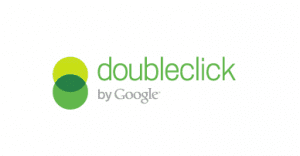Stopping Piracy by Following the Money Trail…
 Copyright holders, especially those who sell copyrighted works for a living and see piracy as a dire threat, are very frustrated with the current slate of tools to protect their work.
Copyright holders, especially those who sell copyrighted works for a living and see piracy as a dire threat, are very frustrated with the current slate of tools to protect their work.
Lawsuits a prohibitively expensive and risky. DMCA notice (especially with search engines) can have a good effect but result in an endless game of cat and mouse that results in millions of notices being sent per year. And alternative business models, though often interesting, have not been proved more successful or more reliable than traditional ones.
Frustrated by the seemingly never-ending tide of pirated content, some copyright holders and their representatives have taken a fourth approach, targeting the money flow to pirate websites.
The idea is pretty simple, running any type of popular website requires money. Servers, bandwidth and time aren’t free so, even if you can’t shut down a pirate site directly, you may be able to starve it until it can’t pay its bills or justify its existence financially.
On that front, they’ve been having some success and getting results where others haven’t. But as pirates adapt to this, could this battle be a preview of what governments will be facing down the road should they follow the same path.
A Brief, Modern History of the Idea
 The idea of targeting websites financially goes back as far as there has been money changing hands on the Internet. However, the more recent history of it began when director Ellen Seidler launched the site PopUpPirates.com in 2010 (previous coverage), where she began to highlight many of the companies whose ads ran next to pirate downloads of her content.
The idea of targeting websites financially goes back as far as there has been money changing hands on the Internet. However, the more recent history of it began when director Ellen Seidler launched the site PopUpPirates.com in 2010 (previous coverage), where she began to highlight many of the companies whose ads ran next to pirate downloads of her content.
(Note: Seidler now does most of her blogging at Vox Indie.)
Though Seidler began to receive some significant media attention, it wouldn’t be until December 2011 that the idea would take the national stage. There, with the backlash against the Stop Online Piracy Act and the Protect IP Act growing, Senator Ron Wyden and Congressman Darrell Issa released a draft text of the Online Protection and Enforcement of Digital Trade (OPEN) Act.
The act would have given rights holders the ability to compel payment processors and other financial intermediaries of suspected pirate sites to cut off the revenue stream of those sites. It was seen as a less-strict alternative to SOPA and PIPA, both of which would have required ISPs to disable access to infringing sites. However, the OPEN actnever gained significant traction, especially after SOPA and PIPA were shelved following intense public protest.
But even without the formal process, some rightsholders began to take matters into their own hands using the current legal framework. The methods, however, were varied.
The Trichordist has taken a very PR-oriented approach. They’ve been working to shame companies whose ads appear on pirate sites (and thus are, even unwittingly, funding them). THis has been coupled with Twitter lists that users can tweet to in order to complain about the issue and case studies of whose ads appears next to certain pieces of popular pirated content.
This issue of ad-supported piracy recently attracted the attention of the New York Times, which covered a University of Southern California report that ranked the top ten ad networks that do business with sites suspected widespread piracy. Chris Castle posted a response to the article on his blog, highlighting what he saw as inadequacies in the (overall solid) reporting.
On the other side of the coin, taking a much more direct route aimed at payment processors, is Australia-based Stop File Lockers, which began in July 2012 and aims to work with payment processors, including PayPal and credit card processors, to cut off the site’s revenue streams.
The site has had some significant success in getting payment processors to break ties with sites routinely used for infringement, though they don’t claim credit for all of the closures in the list.
These revenue issues have deeply impacted some sites. RapidGator, for example, shut its doors after PayPal dropped it (Note: This was before Stop File Lockers) and other sites have been forced to change tactics or scramble to find new forms of payment processing in order to survive.
However, these techniques are not silver bullets. They are simply methods that can be useful and they have their limitations. In fact, in some cases piracy-oriented sites are now actively fighting back against them.
The Issue with Online Advertising
 When it comes to online advertising, despite the pressure and bad PR, there’s been little success getting advertisers to pull out of piracy-oriented sites and only some success getting ad networks to pull away.
When it comes to online advertising, despite the pressure and bad PR, there’s been little success getting advertisers to pull out of piracy-oriented sites and only some success getting ad networks to pull away.
The reason is ad laundering. When an ad for Netflix appears next to an infringing copy of a movie, Netflix can blame its ad agency, which can blame the online agency it subcontracted to, which can blame the ad network, which can blame the smaller ad network it subcontracted to which can then blame the site for lying or misleading them.
As the New York Times article pointed out, everyone can point the finger at everyone else and it’s impossible to know who really is at fault. This makes it difficult to put any real pressure on these companies and it makes it difficult for them to translate any pressure back down into action.
While it is true that such ads don’t routinely appear on porn sites, that’s because porn sites have very different advertising networks, ones that cater only to porn sites. Cyberlockers and streaming sites, mostly, use traditional, non-adult ad networks.
This isn’t to say that advertisers can’t and shouldn’t do more in this area, they can and should, but it’s going to be an uphill battle even though it is still one well worth fighting.
The Challenges with Targeting Payment Processors
 The severing of payment processors and gateways has been a fairly effective tool against sites that trade in pirated works. This is despite the lack of clear legislation requiring it payment processors to disable such access. However, piracy-oriented sites have started to fight back against the loss of their middlemen by, simply put, bringing in more middlemen.
The severing of payment processors and gateways has been a fairly effective tool against sites that trade in pirated works. This is despite the lack of clear legislation requiring it payment processors to disable such access. However, piracy-oriented sites have started to fight back against the loss of their middlemen by, simply put, bringing in more middlemen.
For example, Hotfile was recently terminated by PayPal. but instead the site has expanded its use of resellers, many of which accept PayPal.
These new resellers can be set up and shut down faster than even a new cyberlocker, making them difficult to close completely and one reseller can serve dozens of sites.
Alternatively, smaller sites have been known to switch accounts or just change processors when one is closed and, with so many payment processors to choose from, there’s almost always someone willing to help out.
Finally, as the cost of servers and bandwidth has dropped, keeping these sites online is not very expensive, even streaming ones. This is part of why these sites are as popular as they are, namely that they are cheap to set up and can quickly become profitable.
It’s not to say that they all do, but the cost vs. reward ratio is still appealing enough for many to jump into the game.
Bottom Line
So is targeting the revenue streams of pirate sites a good idea or a bad one? It depends.
Revenue targeting is a tool and a potentially powerful one. It’s a tool just like the takedown notices are a tool, Google DMCA’s are a tool and all of the aforementioned approaches are tools.
Individually, no tool is going to solve the problem or have a drastic impact, but when used together, they can get results. Consider that Newzbin2, the controversial Usenet service, was closed due to a combination of DMCA notices, payment processor issues and lack of user interest in premium accounts.
While Newzbin2 is just one site and one service, it shows the power of combined approaches for dealing with piracy-oriented sites. However, the big key is still going to be crushing user demand and that’s going to be thornier in the long run. Though increased access to legitimate copies can help, there will always be a demand for pirated content but that demand can be limited, mostly, to people who never would pay for the material regardless where it comes from. That would include paying for premium services or clicking on ads.
In short, if the people who visit piracy-oriented sites don’t support them, they won’t be around long at all.
Want to Reuse or Republish this Content?
If you want to feature this article in your site, classroom or elsewhere, just let us know! We usually grant permission within 24 hours.
